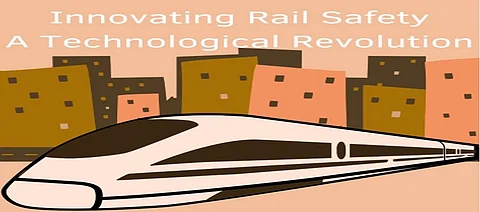

In this digital age, Sridevi Palepu, an authority in advanced transportation systems, delves into the transformative changes in railway safety. Her extensive industry experience reveals how innovative technologies, from automation to predictive analytics, are transforming global rail networks. Her work underlines the importance of modern solutions in efficiency, risk minimization, and safer journeys for all.
The integration of automated monitoring systems has radically changed the dynamics of how railroads handle their safety and operation. Utilizing microcontroller-based technologies, it processes 1,000 status updates from a track every minute with an over 99 percent fault detection capability. It also provides real-time information about crucial parameters such as signal aspects and track circuit integrity that minimize human errors while maximizing efficiency in operation.
Modern nanosensors, made with latest materials, bring precision in tracking that previously has never been seen. Operating within a temperature range of -40°C to +120°C, the sensors can detect changes as small as 10 nanometers. Their durability along with low power consumption paves them a corner for sustainable and reliable railway infrastructure. Nanosensors monitor conditions and alert them in real-time in milliseconds preventing eventual failures from becoming major ones.
Intelligent data acquisition systems have taken railroad safety to another level. Where millions of points are processed using advanced algorithms that detect and rectify conflicts under two seconds. This ability empowers predictive strategies for maintenance so that safety levels are enhanced not only by maintenance but also increased lifespan of parts, thus significantly reducing emergency repair and associated expenses.
Ultrasonic B-scan technology is indeed a game-changer in flaw detection in railway tracks. With multi-channel probes and complex signal processing algorithms, this system picks faults with good accuracy, even at 80 km/h. The introduction of automation into the defect classification process will avoid unnecessary risks and guarantee efficiency in the high-speed railway operation inspection process.
The landscape of railway inspections is rapidly changing with mobile platforms that feature cutting-edge sensor arrays and imaging systems. It is possible for these sophisticated platforms to collect and process multiple channels of data at high speed, thereby facilitating comprehensive assessments of track and infrastructure conditions. Generation of standardized real-time reports will ensure swift decision-making and minimize delay in addressing issues. Moreover, their strong design enables them to work efficiently in harsh environmental conditions without compromising data clarity and security. Through the improvement of inspection efficiency, accuracy, and reliability, these mobile platforms are contributing significantly to the development of modern railways in terms of safety and performance.
The communication system is now the heart of TETRA in providing backbone for all railway mission-critical operations. Being able to accommodate thousands of calls per hour while providing seamless transition from base stations, TETRA gives strong and constant communication. These make operations not jolted even during high-speed conditions, where each millisecond makes a difference.
The integration of GPR and InSAR technologies has redefined the standards for subsurface defect detection in railway infrastructure. GPR excels in mapping and analyzing underground anomalies, while InSAR offers precise measurements of surface deformation over time. Together, they provide unparalleled insights into structural vulnerabilities, enabling railway operators to predict and address potential issues before they escalate. This proactive approach minimizes operational disruptions, enhances safety, and reduces maintenance costs substantially. With the help of such advanced technologies, the railway sector is moving toward a more resilient and efficient future with long-term sustainability and reliability.
Advanced monitoring and control systems have changed the face of the railway industry by changing its outlook toward safety and efficiency. This shift towards innovation through cutting-edge technologies like nanosensors, ultrasonic inspection techniques, and machine learning algorithms introduces a new paradigm into the way rail systems work. This brings forward a more effective, robust, and preventive safety ecosystem rather than merely being predictive or accurate in precision. Such a synergy in all these tools leads railways worldwide to new unprecedented heights of reliability and operational excellence. Far from just a complete overhaul in technology, these developments come as critical components toward safe, efficient, and necessary features in meeting the needs of the modern age.
In conclusion, Sridevi Palepu brings out the dire need for continuous innovation to address modern railways' fast-changing challenges. Her forward-looking approach, deeply rooted in proper research and real-world expertise, can envision a world where advanced technologies redefine safety and efficiency. By seamlessly integrating connectivity with cutting-edge solutions, her work inspires a transformative era for the railways, providing seamless operations and ensuring lives are safeguarded across the globe.
